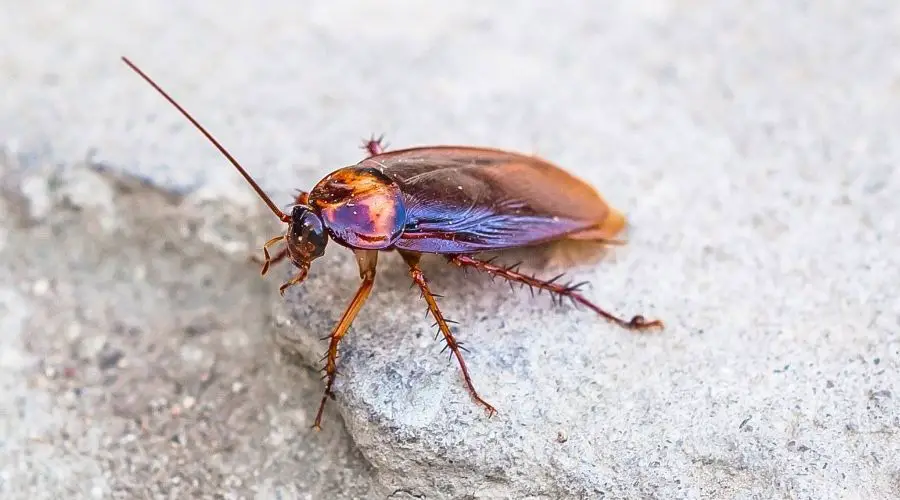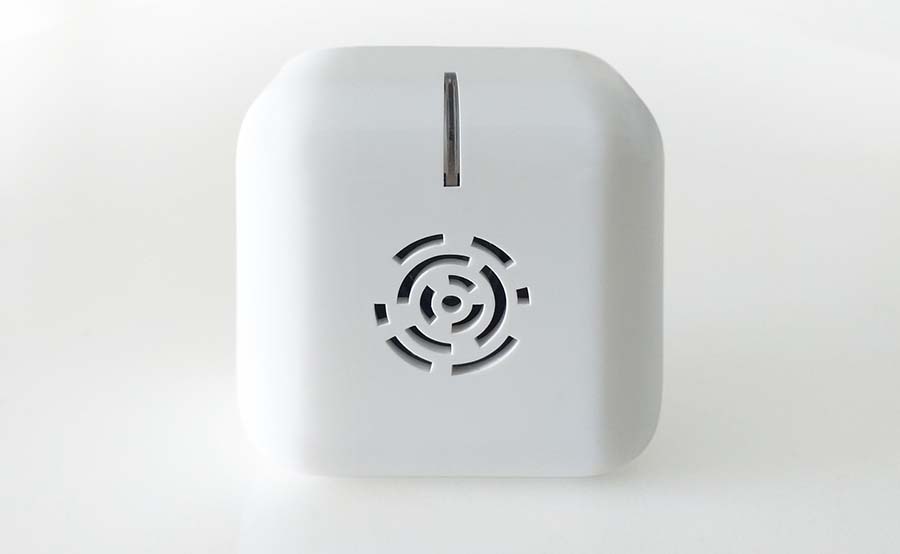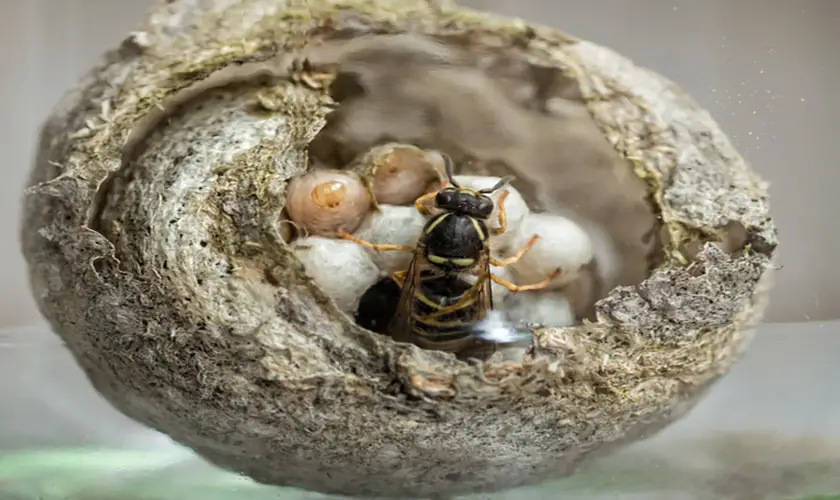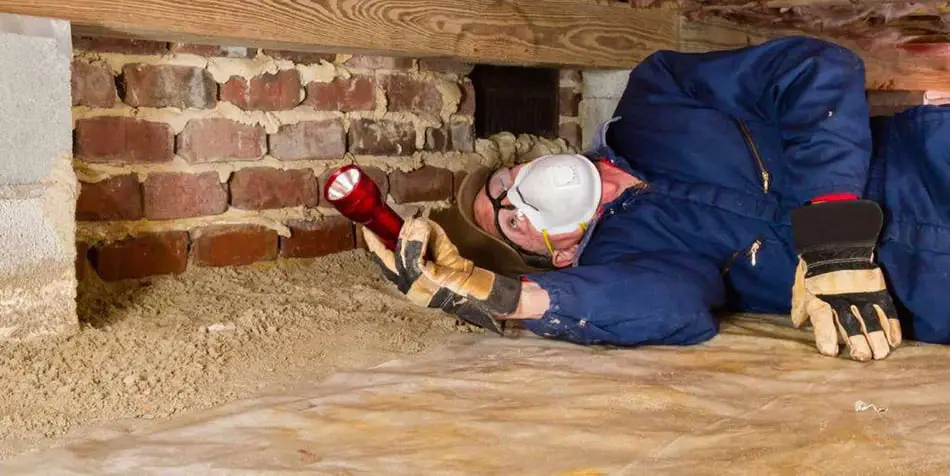
Electronic pest repellers are supposed to work by emitting ultrasonic waves that can upset some pests’ auditory or nervous systems and even kill them. The frequency of these sound waves is so high that humans cannot hear them, but insects and rodents can. The question is, do they work on cockroaches, some of the toughest insects on earth?
The ultrasound waves emitted by commercially available electronic pest repellers are too easily attenuated by cupboard doors, cardboard boxes, walls, and other objects to repel cockroaches effectively. Research has shown that cockroaches are not bothered by the ultrasound emitted by these repellers.
Whiles studies in perfect laboratory conditions show that ultrasound can be fatal in some pests, there is a lack of evidence that commercially available electronic pest repellers do the same.
The devices appeal to consumers because they don’t involve pesticides and chemical repellents harmful to children, pets, and the environment. However, scientific reports have little evidence to support the sellers’ claims.
Get FREE quotes from licensed pest control technicians in your area today. Whether you need spraying for ants, roaches, spiders, ticks, mosquitos, or bed bugs, We Can Help! All technicians are screened, licensed, and insured.
The Theory Behind Electronic Pest Repellers
The packaging on electronic pest repellers suggests that they emit high-frequency soundwaves that drive pests crazy. There are plenty of these electronic devices on the market for the consumer to choose from but are they effective?
The idea is that cockroaches and other pests will find the sound so disturbing that they will flee your home. Many commercially available repellers claim to repel cockroaches, mice, and other pests. It may be hard to find one that is specifically for targeting cockroaches.
Sonic pest repellers emit a sound to repel, deter, or kill unwanted pests such as insects, rodents, birds, and mammals. Depending on the target pest, these devices cover the sound spectrum from below what humans can hear (infrasonic) above what humans can hear (ultrasonic). Infrasonic sound is below 20Hz, whereas ultrasonic sound is above 18,000 Hz.
Ultrasonic devices are commercially marketed to target insect and mammal pests, often with positive customer reviews, but many patents only vaguely describe how the devices operate. There is usually a lack of measurable results to support the claims made in the patent for the device.
Some devices specialize in the type of pest they are meant to repel. The device is plugged into an electrical outlet and left on permanently, so the soundwaves chase the cockroaches away. Manufacturers usually claim that it can take a few weeks before they are gone. Cockroaches have sensory hairs that pick up on ultrasound, but just because they can detect it does not mean they will avoid it.
Ultrasound cannot pass through walls like ordinary soundwaves. When ultrasound hits an object, it does not penetrate through it but bends around it. Cockroaches live in small enclosed spaces inside household appliances, kitchen or bathroom cabinets, cracks in walls, and other crevices in and around the house. These objects shield the roaches from the ultrasound as they cannot penetrate the spaces within them where they are hiding.
Laboratory studies show ultrasound can cause seizures or increase the body temperatures of pests and even kill them. However, homeowners can’t replicate the controlled conditions in the laboratory within the home where cockroaches were exposed directly to the sound and couldn’t hide away.
Also, the ultrasound generators used in many laboratory studies were more complex and powerful than those commercially available for domestic use. The household pest repellers tested in laboratory studies proved ineffective against cockroaches, and researchers advise against buying them.
Cockroaches are a significant public health hazard and spread many diseases to humans. It is, therefore, vital to keep them out of home environments. The danger is that if consumers put their faith in an electronic cockroach repeller that doesn’t work, they may not use other forms of cockroach deterrents that do. This can lead to the spread of cockroaches and disease, so consumers must be aware of the efficacy of these devices.

Safety Concerns Around Electronic Pest Repellers
Some consumers have reported that electronic repellers can interfere with home security systems and hearing aids. Humans can’t hear ultrasonic frequencies, but cats, rabbits, mice, rats, dogs, and hamsters can.
While most dogs and cats don’t seem disturbed by the ultrasound emitted by these devices, some of them can be. It depends on the animal and the particular device you use. However, pet mice, hamsters, and gerbils could be adversely affected by it, especially if the device claims to repel rats and mice, and cockroaches.
In a 2015 article, T G Leighton questioned whether some people suffer from increased mass exposure to ultrasound in the air. The article states that public members are unknowingly exposed to airborne ultrasounds.
Existing guidelines for limiting exposure risk are based on evidence collected more than forty years ago and are only preliminary. It notes that early studies reported nausea, headache, fatigue, migraine, and tinnitus but says there is insufficient research on human subjects to assess current health risks.
In 2014 a study was done in a Tokyo restaurant in Japan using ultrasonic pest repellents. Younger workers could hear them better than older workers. 31 out of 35 volunteers could listen to the devices in the study. However, many complained of discomfort, restlessness, and pain in the ear.
Some responses were extreme, with one person saying their head may split and another saying they wouldn’t come to the restaurant again because of ear pain.
What Consumers Have Said About Electronic Repellers and Roaches
In one review of an electronic pest repeller for roaches, a customer in 2018 said that he had been using one he bought on Amazon for over three weeks hoping to get rid of them, but it didn’t have any effect. He said he had found a roach right on the unit itself. Other reviews claimed it was a waste of money, saying it didn’t work, with one saying it seemed to attract pests.
By contrast, many other positive reviews for the same product claimed that it worked, but many of these were regarding mice and rats. A few said the roaches disappeared after the device’s installation, and some customers were impressed with it.
These customers did not say in their reviews whether they used insecticides or other prevention methods in addition to the repellers or whether any other factors could have contributed to their success.
In 2018 a settlement was reached in a class-action lawsuit against an ultrasonic pest repeller’s distributors alleging fraud-based and warranty claims. Advertising for the repellers claimed they were fast and effective and repelled mice, rats, roaches, spiders, and ants.
Photographs submitted to the court showed mice gathered next to, and even on top of, the plugged-in repeller. It is unclear whether the people also presented evidence that the device did not repel cockroaches.
What The Federal Trade Commission Says About Electronic Pest Repellers
In May 2001, the Federal Trade Commission (FTC) issued warning letters to more than sixty manufacturers and retailers who sold electronic pest repellers requiring that claims of efficacy be supported by scientific evidence. The FTC Act prohibits deceptive and false advertising.
In July 2003, the FTC charged a company in Trenton, Missouri, with making unsubstantiated claims that its devices effectively drove away cockroaches and other pests.
The FTC complained that the company made unsubstantiated claims that:
- Their electromagnetic pest control products repel mice, rats, and cockroaches in two to four weeks, by sending a pulsating signal through the electrical wiring inside homes and other structures. They are an alternative to chemicals, insecticides, and pest control.
- Their electromagnetic/ultrasonic pest control devices repel mice, rats, and cockroaches, from buildings and upset their nesting sites using the products’ pulse or electromagnetic technology.
- Depending on the model, the products are effective within 800 and 2,000 square feet.
The company agreed to settle the charges through a consent agreement, prohibiting it from making specific claims for its pest control devices unless it had adequate scientific proof. The settlement banned it from representing, in the absence of competent and reliable scientific evidence, that its pest control products:
- Repel, mice, rats, cockroaches, or any other insects or animal pests, and that it does so in an area of a specific size.
- Pest control products are an effective alternative to other pest control products such as chemicals, pesticides, insecticides, and other pest control services.
- Alter the home’s electromagnetic field by sending a pulse through the wiring in a manner that repels or eliminates mice, rats, cockroaches, or any other pests.
In February 2003, the FTC charged a different company with making unsubstantiated claims for their electronic pest repellers. Using ultrasound and electromagnetic technology, they claimed that their pest control products drove away bats, cockroaches, rats, mice, and other household pests.
The proposed consent agreement prohibited the company from representing that the company’s products using sonic, ultrasonic, or electromagnetic technology will repel, control, or eliminate rodents, insects, or other pests or do so in an area of a specific size.
Despite the FTC warnings and actions over the years, electronic pest repeller popularity does not seem to have waned. If anything, there are now more of them on the market than ever.
What Studies On Electronic Pest Repellers Have Found
- One study by Kansas State University in 2002 found that ultrasonic pest repellents worked on crickets and some other insects but not cockroaches. They also did not work on ants and spiders. Some of the pests that were initially bothered by the noise became used to it over time as they realized it was harmless.
- In one 1983 study, German cockroaches were exposed to ultrasonic waves at five different frequencies for several days in choice boxes. The term “choice boxes” refers to which package the cockroach chooses to live in based on the ultrasound frequency in the box. The study found that the ultrasound made no significant difference in which the cockroaches selected boxes. The ultrasounds were evenly distributed throughout all of the boxes.
- In another study done in 1984, researchers found that ultrasound increased cockroach activity, and some insects preferred the area away from the speaker. Researchers did this experiment with German cockroaches gathered from the field.
They were confined in plywood cubes with food, water, and an ultrasonic device for seven days. Pairs of cubes were connected by tubing, and only one cube contained the sound-emitting device. The researchers found significantly fewer cockroaches in the cube containing the sound emitter.
However, when the same researchers in the 1984 study did a follow-up to see if commercially available ultrasound devices met the manufacturers’ claims, they discovered that the devices fell short and didn’t repel cockroaches.
The electronic repellers did not control or repel the test cockroaches. The sound they emitted could be attenuated by a piece of cardboard only three millimeters thick. The cardboard effectively dampened the soundwaves to the point that they were ineffective.
The table below shows the results of seven studies on ultrasound repellency against cockroaches using electronic pest repellers.
| Year | Study Authors | Effective | Failures | Successes |
|---|---|---|---|---|
| 1991 | Brown & Lewis | No | 4 | 0 |
| 1989 | Koehler et al | No | 1 | 0 |
| 1986 | Koehler et al | No | 9 | 0 |
| 1984 | Ballard et al | Yes | 4 | 4 |
| 1984 | Gold et al | No | 4 | 3 |
| 1984 | Schreck et al | No | 2 | 0 |
| 1983 | Ballard & Gold | No | 18 | 6 |
A 2006 study placed three commercially available electronic repellers in plexiglass boxes with German roaches to see how they would react. The researchers found that the ultrasound waves emitted by all three devices had no repellent effects on the cockroaches and did not harm them either.
In 2007, a study investigated the repellency of ultrasound to cockroaches and mosquitoes using a random ultrasound generator from Kansas State University. The device produced ultrasound frequencies between 20-100 kHz and random sound patterns at any frequency.
The device failed to repel both cockroaches and mosquitoes at various frequencies. The researchers concluded that the study confirmed previous commercial devices’ findings that ultrasound is ineffective at repelling cockroaches or mosquitoes.
There is no conclusive scientific evidence that electronic pest repellers are effectively against cockroaches. Scientific studies that expose cockroaches to ultrasound are conducted in controlled conditions where the insects cannot escape or hide. However, in real life, many variables exist to consider when using ultrasound as a cockroach repellent because of these insects’ habits.
Cockroaches rarely come out in the open, where they can be exposed to the full blast of the ultrasound. They live in crevices inside and around the house, which means there are potentially many sound attenuating surfaces between the roach and the device. Even if it annoys or irritates them, their exposure to the sound will likely be minimal.
Some users are convinced that electronic pest repellers work, while many pest control experts assert that they don’t. In particular, Roaches do not seem to be too bothered by these devices while they may work for some other pests. There are no formalized industry standards for manufacturing electronic insect repellers, which means that buying one is a bit of a hit-and-miss affair, even assuming they can be effective.
Conclusions
Despite the popularity of electronic pest repellers and many anecdotal accounts by consumers that they work, there is no scientific evidence or substantiated proof to support this.
Whatever their effects may be on other pests, cockroaches are undeterred by them. This may be because cockroaches have many sound barriers around them that deflect the ultrasound away, but it could also be merely that they are not particularly bothered by the sound.
Get FREE quotes from licensed pest control technicians in your area today. Whether you need spraying for ants, roaches, spiders, ticks, mosquitos, or bed bugs, We Can Help! All technicians are screened, licensed, and insured.








